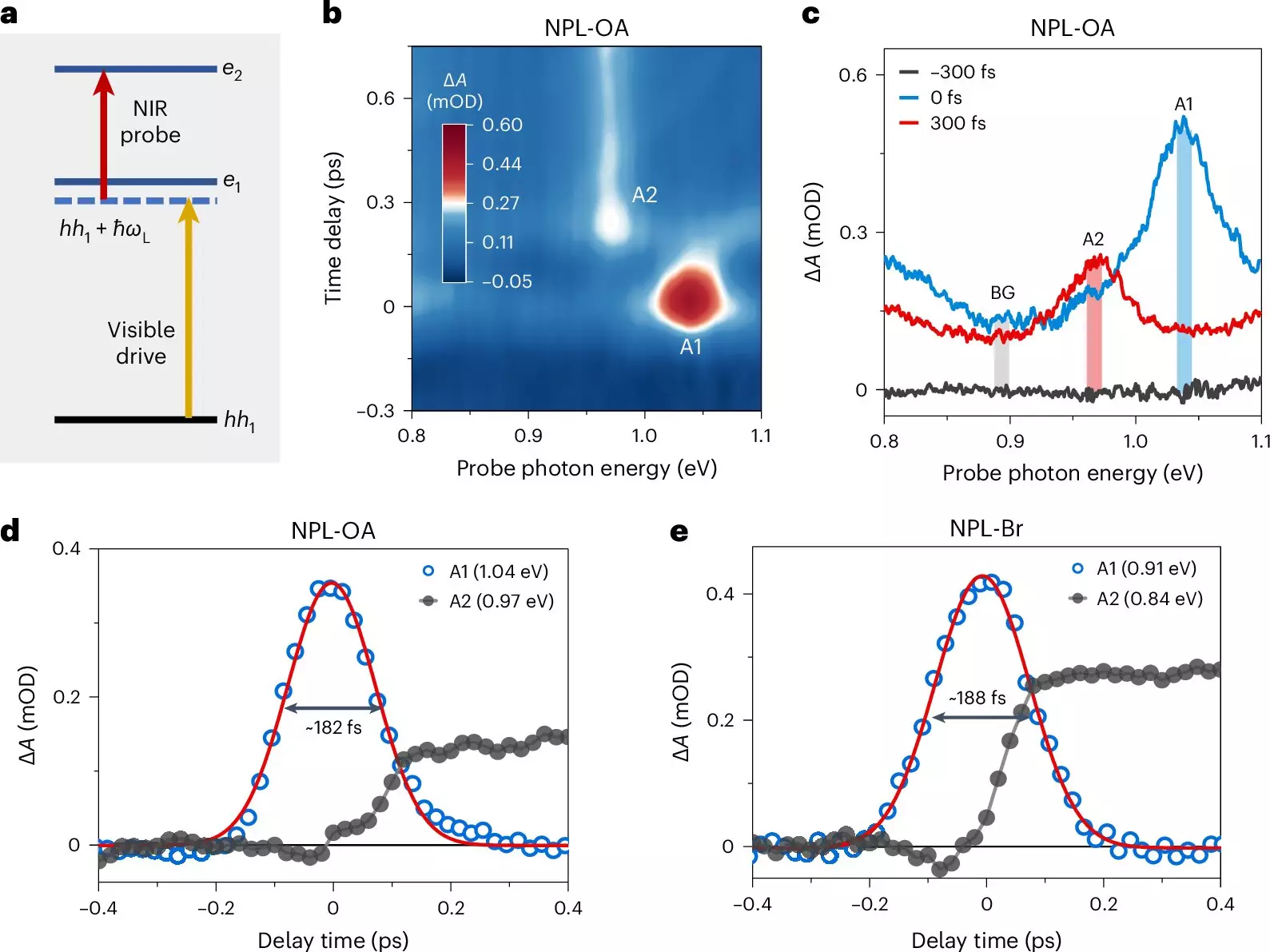Colloidal quantum dots (QDs) represent a fascinating intersection between nanotechnology and quantum mechanics. These semiconductor nanocrystals are prized not only for their size-dependent optical properties but also for their ability to exhibit unique quantum effects that yield vivid colors observable to the naked eye. The breakthrough in synthesizing QDs has enabled physicists to explore phenomena that were once relegated to theoretical frameworks, bringing quantum effects to life in tangible materials. For years, researchers have aimed to manipulate these quantum properties in pursuit of advancements in quantum optics, energy harvesting, and photonics.
One of the most captivating quantum effects associated with QDs is the phenomenon of Floquet states. These states are essentially a consequence of the coherent interaction between light and matter, and they allow researchers to explore new realms of quantum manipulation. Traditionally, such quantum phenomena have been shrouded in complexity, often confined to low-temperature, high-vacuum settings. The challenge of accessing Floquet states in more ambient conditions has been a significant hurdle in experimental physics. The experimental investigation required to demonstrate Floquet’s concepts has often involved intricate setups and limited environmental contexts, which curtailed broader applications in quantum-driven technologies.
A groundbreaking study published in Nature Photonics has turned this scenario on its head by achieving the direct observation of Floquet states in semiconductor materials using all-optical spectroscopy techniques. The research team, led by Prof. Wu Kaifeng from the Dalian Institute of Chemical Physics, has successfully shifted the paradigm by demonstrating these observations in ambient conditions, employing colloidal nanoplatelets that were developed over the last decade. This advancement is monumental, as it signifies the first time Floquet states have been observed outside of the stringent confines of vacuum and low-temperature systems.
By concentrating on quasi-two-dimensional structures, the researchers leveraged the robust atomic precision of quantum confinement to facilitate transitions in both the visible and near-infrared regions. These transitions, which operate within a unique three-level quantum system, allow for the intricate manipulation of electronic states. The experiment elucidated how a sub-bandgap photon could effectively ‘dress’ a heavy-hole state, resulting in observable transitions to higher energy states.
One of the highlights of this research is the discussion surrounding the dephasing of Floquet states. Contrary to prior assumptions that these states dissipated outside the temporal overlap of excitation and probing pulses, Prof. Wu’s team discovered evidence of direct dephasing leading to real population transitions on the femtosecond timescale. This revelation not only contributes to the fundamental understanding of quantum state dynamics but also emphasizes the robustness of these states under ambient conditions, unlike previous studies that were typically limited to specialized environments.
The implications of this study extend beyond mere academic curiosity; they promise practical applications in diverse fields such as optoelectronics, photonic devices, and potentially in quantum computing. The ability to harness and control Floquet states in semiconductor materials under normal atmospheric conditions opens new avenues for developing technologies that could dynamically control optical responses and enhance coherent processes in condensed-matter systems. For instance, advancements in this area could lead to significant improvements in solar energy conversion efficiencies, as there is potential for controlling surface and interfacial reactions through non-resonant light fields.
The recent discovery by Prof. Wu and his colleagues marks a significant milestone in both the fields of quantum physics and material science. By demonstrating the observable dynamics of Floquet states in colloidal quantum dots under ambient conditions, this research not only paves the way for future investigations but also broadens the scope of Floquet engineering. As the scientific community grapples with the implications of this research, it is clear that the marriage of quantum principles with accessible material systems could lead to revolutionary breakthroughs across multiple technological domains.

